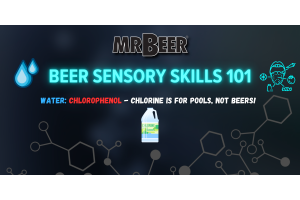Choosing Yeast for Brewing

When you're considering ways to get creative with your own beer recipe, yeast choice is important for fine-tuning flavor, aroma, and body.
Style is a great place to start.
Many yeasts are pedigreed for certain beer styles, so simply knowing which style you are brewing will help you easily choose the yeast you will need. With that said, don't be afraid to experiment. Some brewers even blend yeasts to get the qualities of more than 1 strain. There are many yeast companies that brew the same strains (for example, Safale US-05 dry yeast is the same as White Labs WLP001, Wyeast 1056, or Imperial Flagship) and many of them will also have exclusive strains that only they sell. Shop around and read the reviews until you find the right strain for your beer. Here are some popular yeasts for particular styles:
American, English, Irish, & Scottish Ales
- Safale US-05 is an American strain from Sierra Nevada Brewing, also known as the "Chico" strain
- Safale S-33 is a general-purpose yeast that can be used for almost any low-to-moderate ABV beer
- Safale S-04 is an English strain, but is also good for Irish/Scottish ales
German Ales
- Kolsch yeast
- Wheat yeast, such as the white packet under the lid of our Bavarian Weissbier
- Safbrew WB-06 - a Weihenstephan strain
Belgian Ales
- Safbrew T-58
Lagers
- Saflager S-23 & Saflager W-34/70 are both German strains, but W-34/70 (a Weinhenstephan strain) has a cleaner flavor profile with less fruity esters
Cider
Hard ciders can use any ale, lager, or wine yeast. It all depends on what flavor you are trying to get.
- Safale S-04 will make an English-style cider with some bready notes
- Safale US-05 will be more neutral, bringing out more apple flavor, but it will be drier
- Safale S-33 is a good yeast if you want some residual sweetness
- Wine yeasts are referred for ciders above 10% ABV
Champagne/Wine
Red Star and Lalvin are the 2 primary wine yeast companies. They both have a very large variety of strains for wines, meads, and sparkling wines. On ale vs. lager… Ale yeasts (Saccharomyces cerevisiae) are always fermented at moderate temperatures (65-75 degrees Fahrenheit, typically), but can go as high as 90 degrees for some strains (Saison & wheat strains). Lager yeasts (Saccharomyces uvarum) are always fermented at lower temperatures (45-55 degrees Fahrenheit typically, but can go up to 70 degrees for California Commons, aka "Steam beers"). Ale yeast is usually referred to as a "top-fermenting" yeast, while lager yeast is referred to as a "bottom-fermenting" yeast. This distinction is a misnomer originating from the observation that ales tend to have a large fluffy krausen (or foam) during fermentation while lagers do not. Yeast activity is always distributed throughout the liquid regardless of strain.
Consider yeast's role in flavor.
Some yeasts can create esters with aromas/flavors similar to bread, fruit, or spice, such as banana, clove, and apple. Other yeasts can be more neutral and flavorless to allow the flavor of the malts and/or hops to dominate the beer.
Attenuation will affect finish.
Attenuation refers to the percentage of sugars that have been fermented by the yeast. A yeast with 70% attenuation will finish the beer much sweeter than a yeast with 90% attenuation, which leaves the beer much drier.
Flocculation will play a role in body and haze.
Flocculation is the process by which particles clump together in a "floc" or small lumps that will settle into the trub. A low flocculating yeast will leave the beer hazy and the trub will be loose. A high flocculating yeast will leave the beer clear with a compact, tight trub.
Dry or Liquid?
- Dry yeasts have a much longer shelf life than liquid yeasts (up to 3 years vs 6 months)
- Because only certain dry strains can handle the freeze-drying process, variety is limited compared to liquid yeast.
- Dry yeast can be stored at room temperatures, but it is best to refrigerate it.
- Liquid yeast must always be refrigerated.
While we're hoping all these tips guide your yeast selection process - creativity is encouraged! Test and experiment!
Not too sure what you are referring to, the yeast should not ruin your batch. Depending on what kind you pitched it can affect the taste of your beer. If you would like a little more help, reach out to our customer service team and they would be glad to assit you.





